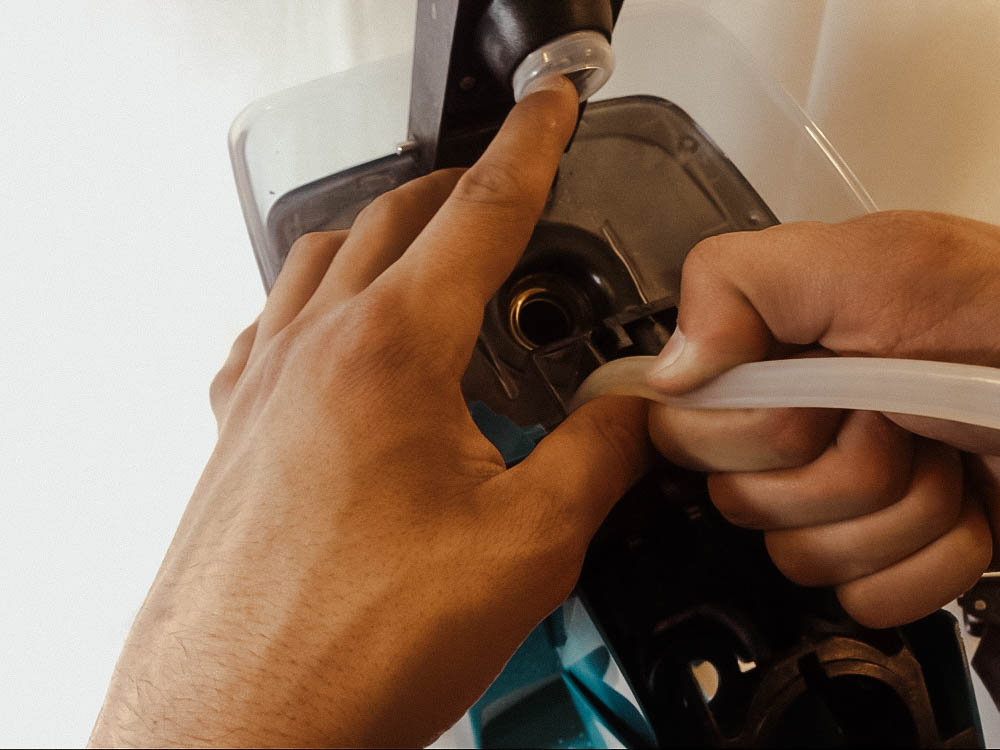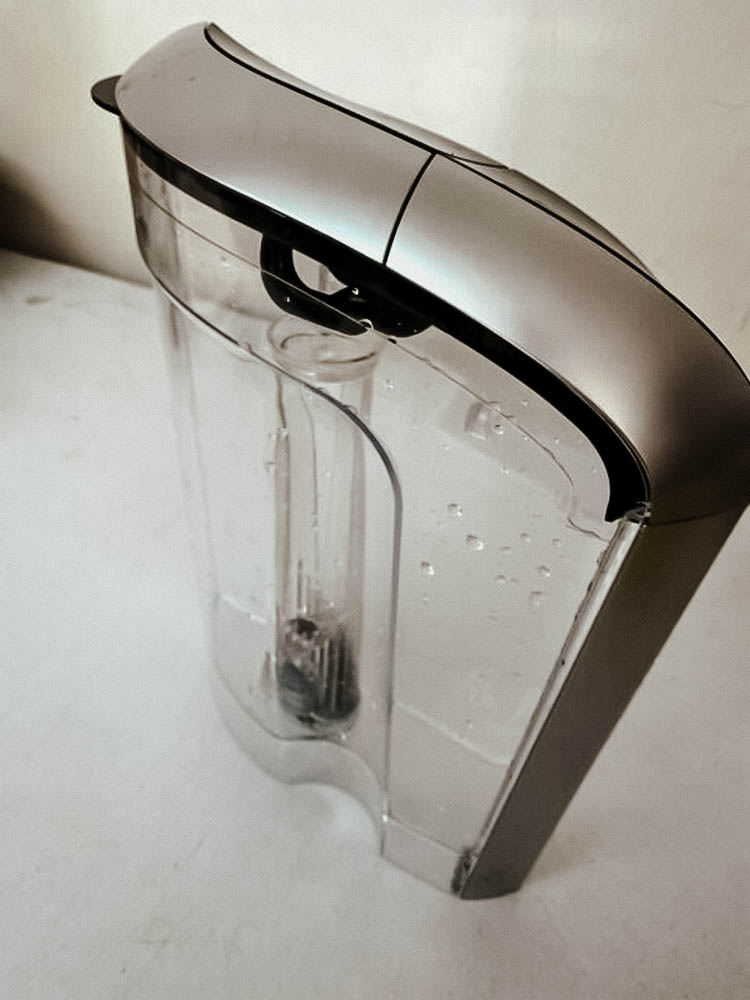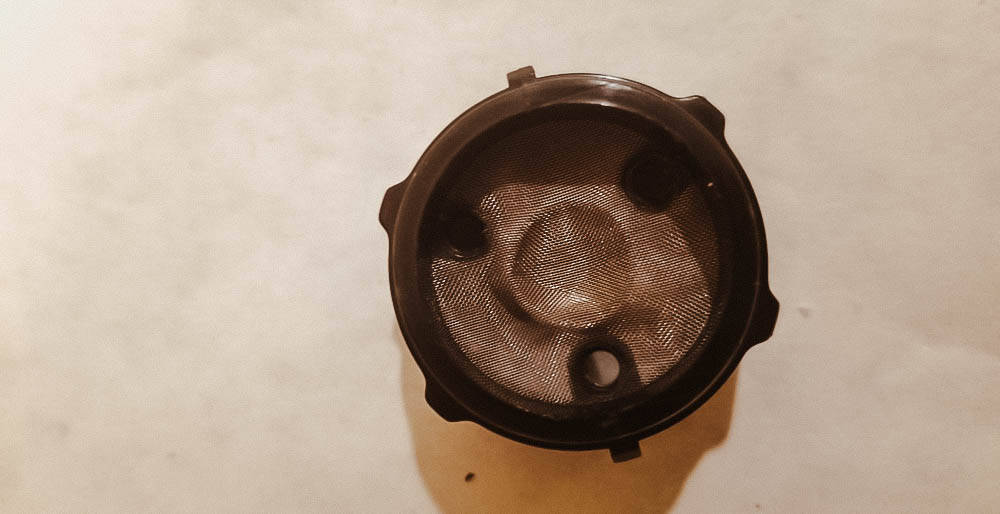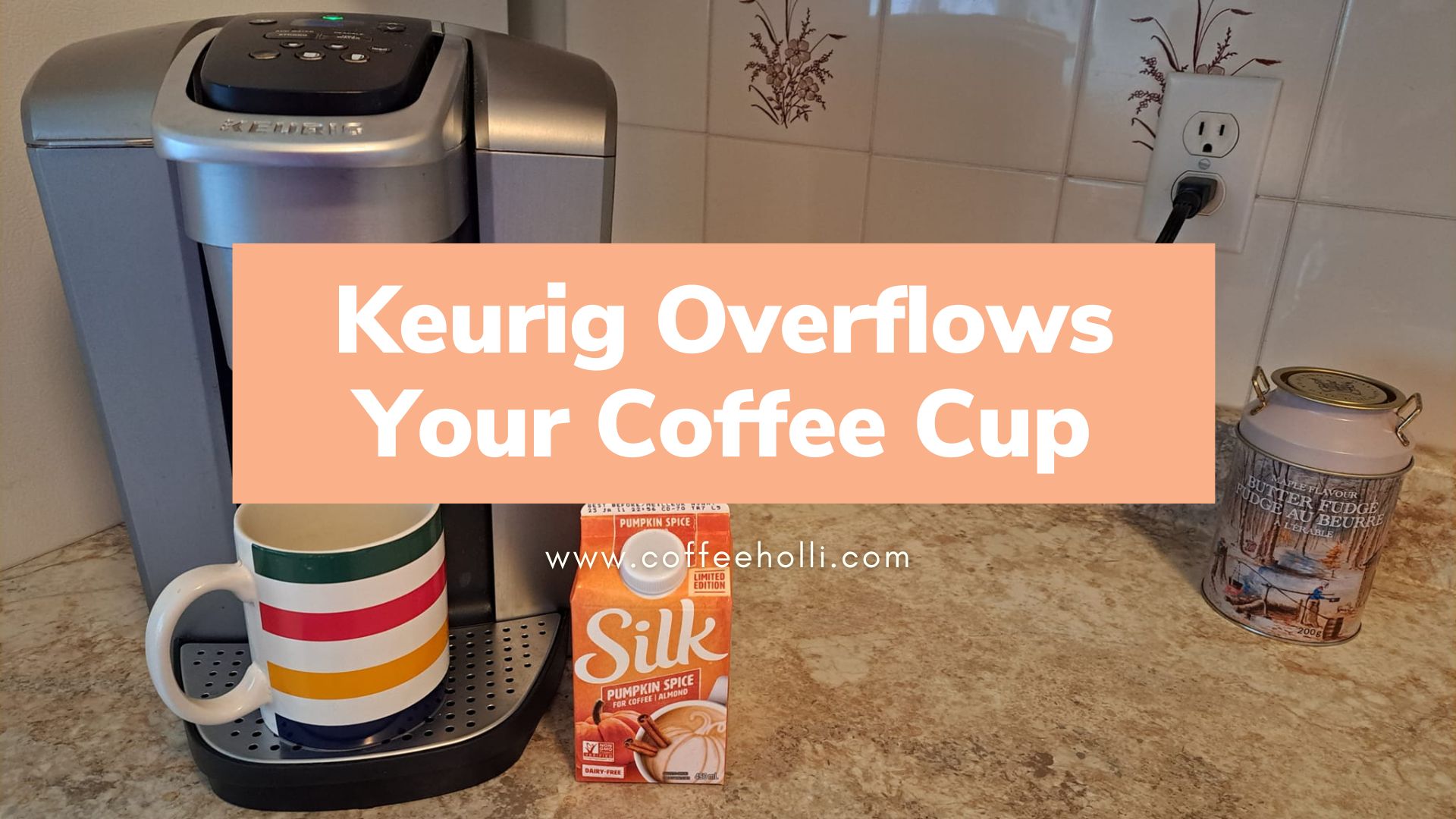Fact:
Your Keurig coffee maker is designed to automate the coffee brewing process. It is meant to be precise at all levels.
As such:
It can be frustrating when your coffee overflows from the cup after brewing. This wastes a lot of good coffee and can be very messy.
Now:
Switching between cups while brewing isn’t the right solution. Some coffee is still wasted, and you end up not making the best of your Keurig coffee maker.
Thankfully:
There are a few possible solutions to the overflowing cup problem.
Table of Contents
Keurig Overflows Your Coffee Cup
Making more coffee than you need can be wasteful. It sucks when this unintentionally happens. Thankfully, you can stop your Keurig from over brewing coffee by trying a few of these common solutions. Make sure you choose the right cup size, change your charcoal filters frequently, check your machine pump, and fill the water reservoir adequately.
1. Double-check Your Size Option

Your Keurig coffee maker was designed to cater to your coffee needs. As such, most models come with varying cup sizes depending on how much coffee you need.
Note:
The higher the number, the more coffee your Keurig will brew. Make sure you choose the right setting before you start the brewing process, or your cup may overflow.
Also:
Feel free to read the instruction manual for further clarity. Each size is explained in the manual, and it could help clear any doubts you may have.
Finally:
Never assume you have the right size selected. Double-check your settings whenever you restart the brewing process.
2. Select an Appropriate Cup
You should always ensure you pair the right size setting with an appropriate cup. Now, knowing the exact size of your cup is not necessary.
However:
You should be able to tell whether or not your brew will fit. If all else fails, use as large a cup as possible.
Now:
This acts as a failsafe. Use a cup that can contain the largest size setting on your Keurig coffee maker. You can always transfer your coffee into a smaller cup if you wish.
3. Empty Your Coffee Maker

Fact:
Your Keurig coffee maker is designed to finish a brewing cycle.
Sadly:
Your coffee maker may begin to act up if the brewing cycle is interrupted in some way, shape, or form.
Thankfully:
You can soft reset the coffee maker by emptying it. You can do this by following the step-by-step process below.
- Step 1: Fill the reservoir enough for a single brew.
- Step 2: Make sure the K-cup holder is empty.
- Step 3: Place a large cup on the drip tray and brew the largest size.
- Step 4: Allow the brewing process to finish and empty the cup.
- Step 5: Allow your coffee maker to sit for half an hour after.
This should reset the size settings and have your coffee maker brewing normally.
4. Water Reservoir not Seated Properly

The cold water reservoir is a vital part of your Keurig coffee maker. It holds the water used in brewing and connects directly to the coffee maker.
Now:
Your coffee maker siphons water from the reservoir. It may end up taking more than necessary if the water reservoir isn’t properly seated.
As such:
Ensure your cold water reservoir is properly placed when setting up your coffee maker.
Thankfully:
The reservoir is designed to fit comfortably into its slot on your coffee maker. It is easy to tell when the reservoir is positioned incorrectly.
5. Old Charcoal Water Filter Cartridges

Charcoal water filters are a key component in your coffee maker.
You see:
Coffee is best made with clean water, and charcoal filters are an extra layer of water quality assurance.
However…
These filters easily rust when overly exposed to hard water. They can also get clogged.
As such:
You should replace your Keurig coffee maker water filters as frequently as possible.
Now:
Clogged or rusty filters could cause your coffee maker to overflow. Your coffee maker may incorrectly gauge how much water is going into the brewing process if the filter is clogged.
Thankfully:
New water filters are easy to obtain. However, ensure you buy the right filter for your Keurig model.
6. Overfilled Reservoir
Your Keurig cold water reservoir was designed with a water limit. Most models have a visible line indicating what this limit is.
Now:
It is best to fill the reservoir to or below this line. Filling your reservoir with too much water could cause it to Overflow.
Also:
Larger Keurig water reservoirs could act strangely with increased water pressure.
You see:
Your coffee maker may end up taking in more water than necessary for the brewing process if the tank is overfilled.
The result:
Your Keurig coffee maker ends up brewing more coffee than intended, ultimately overflowing your coffee cup.
Conclusion
Good coffee is often expensive, and K-pods aren’t meant to go to waste.
As such:
Watching your coffee overflow from your cup and spill everywhere can be disheartening.
However:
Don’t panic, and try the following troubleshooting methods.
- Choose the right size settings for your cup.
- Use the right cup for the task. Larger is always better.
- Empty your coffee maker before your next brew.
- Make sure your water reservoir is properly connected to your coffee maker.
- Change your charcoal water filters as frequently as possible.
- Fill your Keurig water reservoir to the right level before brewing.
The goal is to make the most of each k-pod and brew the right amount of coffee every time.
Now:
Did you find any of these methods helpful? Do you have something to add to the list? Do you have a suggestion for us? Feel free to leave a comment in the section below.
Frequently Asked Questions
You may have selected the wrong programmable size for your coffee cup. Make sure you use as large a coffee cup as possible before brewing.
Also:
Ensure your water reservoir is seated properly and filled to the right level before brewing.
Your Keurig may be dispensing more coffee than intended because of a previously interrupted brewing cycle.
First:
Drain your Keurig coffee maker and allow it to sit for half an hour.
Finally:
Plug it back in, and it should start brewing normally.
This usually happens because of the rubber gasket on the needle. Your reusable K-cup may not necessarily be at fault.
Now:
To remedy this, follow the step-by-step instructions below.
Step 1: Lift the K-pod lid and remove your reusable coffee pod.
Step 2: Look for the entrance needle. Locate the rubber gasket near the tip.
Step 3: Lower this gasket as far as possible without removing it.
Step 4: Fill up your reusable K-pod with coffee grounds and brew normally.
This should fix the overflowing problem and allow you to brew the perfect cup of coffee.
Be careful how you pack your coffee grounds if you are using a reusable K-cup pod.
You see:
Water needs to flow through the coffee during the brewing process. Packing the pod too tightly might interrupt this flow and cause your coffee maker to overflow.


